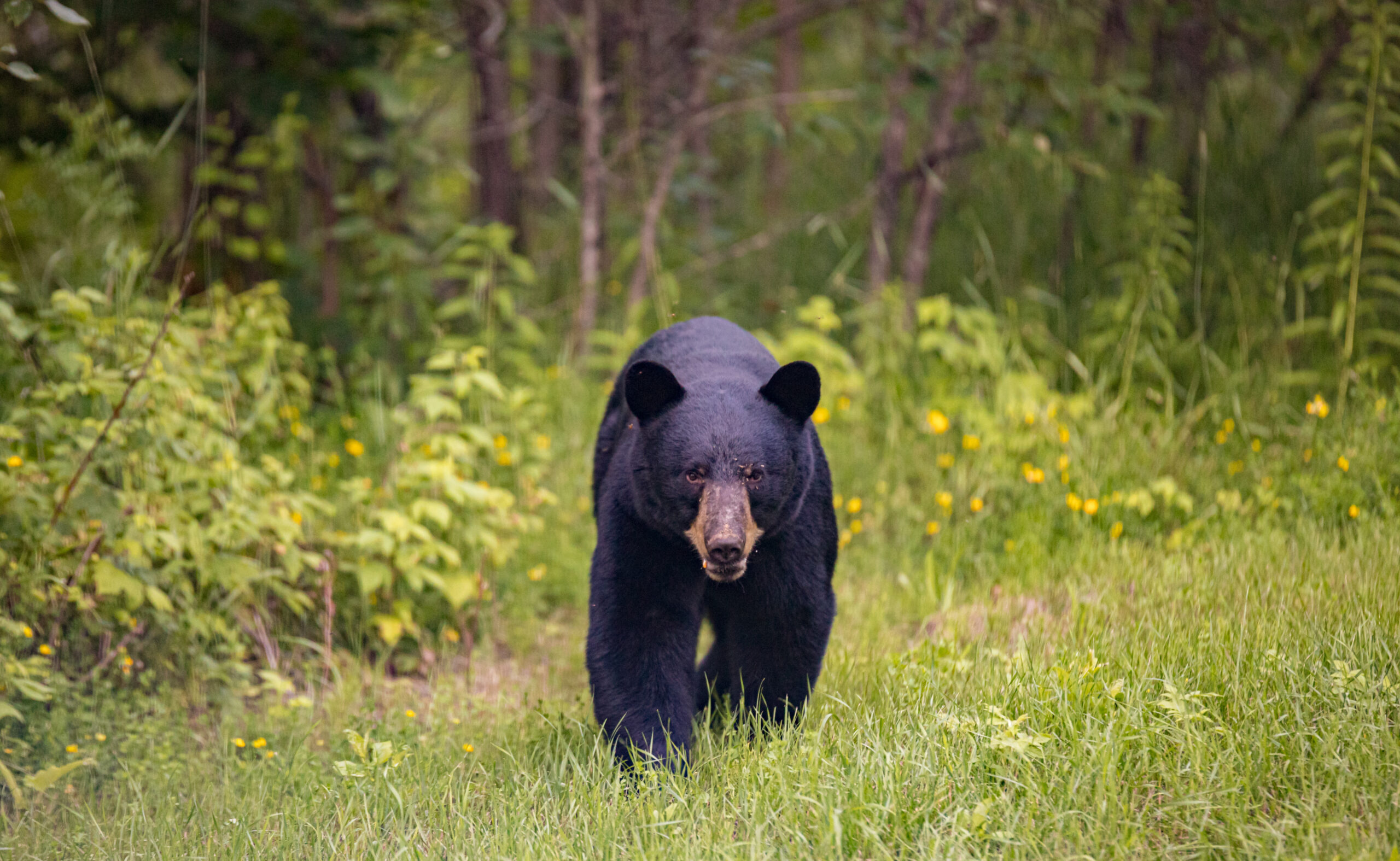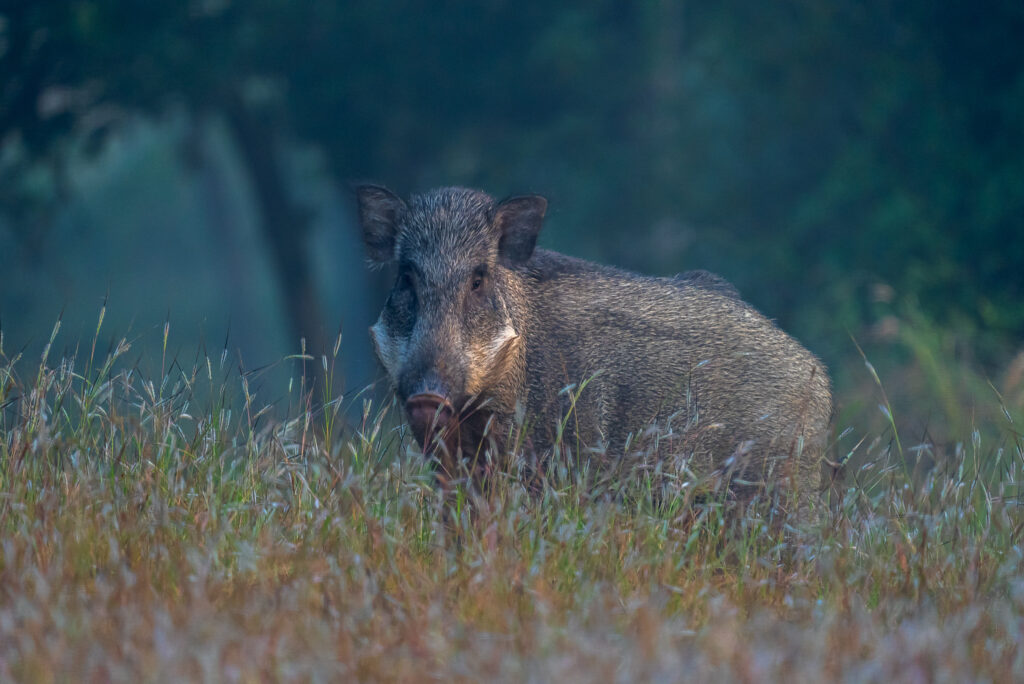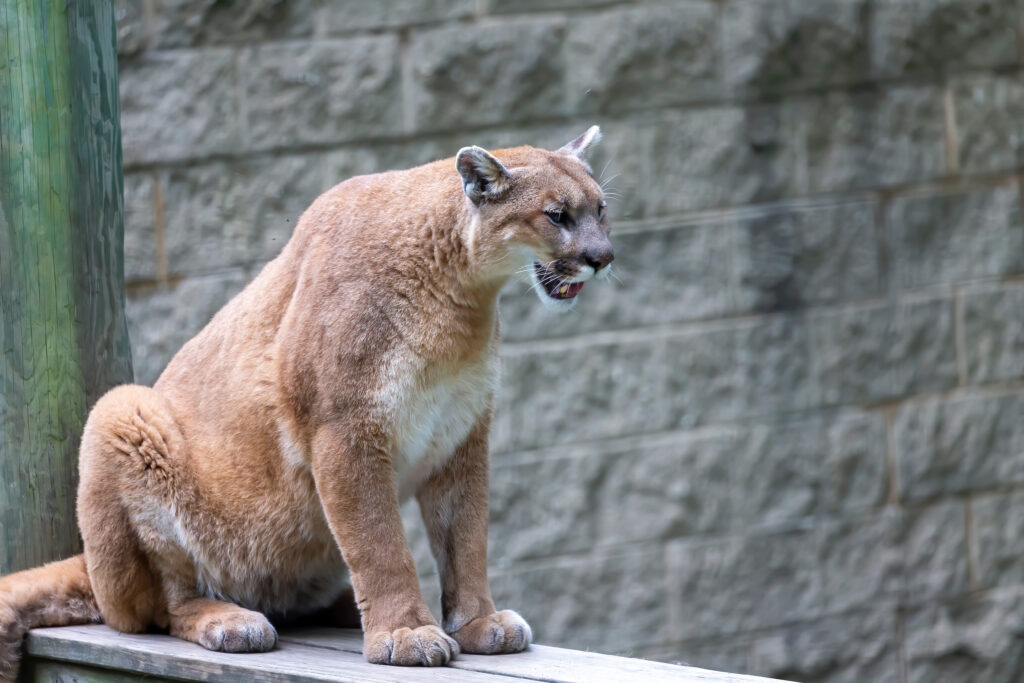
I would be remiss if I ignored our big four critters. They are the panther, black bear, feral pigs, and pythons. I previously wrote about alligators. These guys are in their own category because they can cause significant damage to folks in the wrong situations—although it would be extremely unlikely. But, hey, Mother Nature plays by her book, not ours. In most situations, these critters would rather flee than fight, and, gratefully, there have been no documented bear attacks in Florida. But if any of them are provoked, ugly things might happen. In all my nature hikes, I consider myself very lucky to have seen just a few of these guys in the wild. I was only frightened once (read on). We will visit these guys in alphabetic order.
BLACK BEAR
This is one critter I have not seen in the wild, but I don’t travel in areas they frequent. They are listed as a threatened species. The males weigh about 300 pounds and the females about 160, they are the largest land mammal in Florida, and they breed from mid-June to mid-August.Florida Fish and Wildlive Conservation Commission (FWC) considers the area on the other side of Burnt Store Road as a possible location for these bears to frequent. Yucca Pens Wildlife area has the type of wild forest/grass and pinelands where the bears can find food. As it is for all our big critters (and some humans), food is their motivator. They are found primarily in Florida’s three big national forests. Take away their food source and they will move on or change their diet; however, it’s very unlikely here in Florida. FWC estimates that there are about 4,000 black bears in Florida. Other bear species are not found in Florida. If you go camping in some areas of Florida, you need to
be very careful of any food items you carry or anything that might have a food odor.
FERAL PIGS (HOGS)
This is the critter that scared the heck out of me. We were in the outer suburbs southeast of Orlando when, after rounding a blind corner in the woods, I came upon some newly born baby pigs; their 200-pound mother was not happy that we were that close to her kids. We quickly ran back from where we came. She followed us a short distance away just to make sure we were gone. The hogs prefer oak/cabbage palm hammocks and freshwater marshes. They can quickly rototill the ground searching for young roots, nuts, and grubs. Large males and females can weigh several hundred pounds and are 3 feet tall and up to 5 feet long. They are the most dangerous to people when traveling in large groups with their young. They have attacked humans when provoked, and they can run faster than our fastest Olympians (about 30 miles per hour). The males have large tusks that are very dangerous. Hernando de Soto brought the first hogs to the East Florida coast in 1539, and the current population estimate is over 500,000 hogs in all 67 counties of Florida.

FLORIDA PANTHER
They are very beautiful, scarce, and possibly dangerous animals. They are not generally found north of the Caloosahatchee River. If memory serves me correctly, the first cat that crossed the river 10 to 15 years ago was a male, followed by a female a few years later. They are a subspecies of the western mountain lion but live in South Florida. Their original range was most of Florida. The male is about 30 inches tall and 8 feet long (with a 30-inch tail that has an upward bend at the end). A bobcat’s tail is only about 10 inches. Today there are only about 200 panthers in all of Florida. It is one of the most rare and endangered animals in the United States. I believe we have about 30 killed each year by cars and other accidents, which the females try to make up for by having about 50 cubs combined—but only every other year. The FWC has tried to bring in some western mountain lions because of the panthers’ inbreeding. They feed on deer, hogs, rabbits, rodents, and birds. They are also known to kill young livestock. Unfortunately, their food source is being eaten by larger pythons, making it hard for them to survive. While hunting them with my camera, I only saw one for about three seconds, 21 years ago, crossing some railroad tracks. I couldn’t get to my camera fast enough, and I didn’t feel like following it into the woods. So, your best chance to see one would be at the Naples Zoo. Babcock Ranch had one about 15 years ago, but it has since passed on. If you would like to follow the panther, FWC has their “Panther Pulse Web Page.”

PYTHONS
These are the biggest threat here in Southwest Florida. They have been known to eat a small deer or a hog. They have also eaten most of the small mammals, which makes it harder for the native predators to feed themselves. Florida has been trying for decades to control these invasive pests. They even have substantial rewards for licensed trappers to get the females and anything over 6 feet long. Supposedly, it was Hurricane Andrew decades ago that destroyed the captive pets at a store. Perhaps some python pet owners released some when the snakes got too big. They are now trying to track the bigger females with GPS tags. When they are “in season,” many males try to breed with them. However, the trackers still must first find the large females, which is a problem wading 3 feet deep in vegetated muck swamps over thousands and thousands of acres. If you happen upon one of these critters while walking in the woods, please be very careful. If you do see a panther, bear, or a python, FWC would like to know their location, with a picture if possible. It is best to view these critters, and other dangerous ones, at a local zoo where you can take your sweet time admiring them or taking pictures. Some of my best photos are taken at zoos or captive centers like Peace River Wildlife. Enjoy our wildlife before the next 50,000 new people decide to make Southwest Florida their new home.







